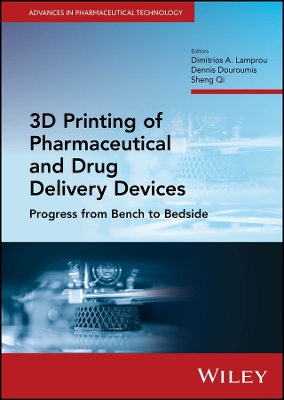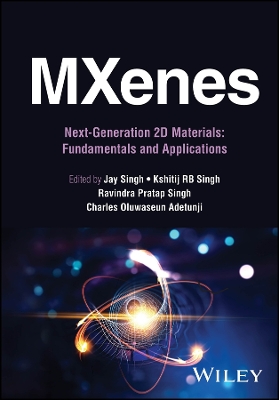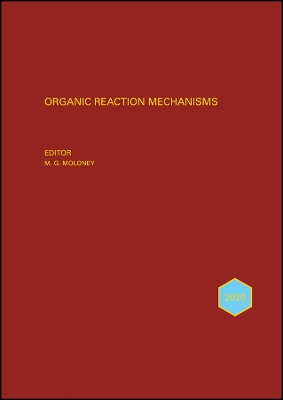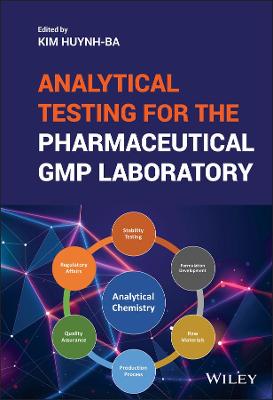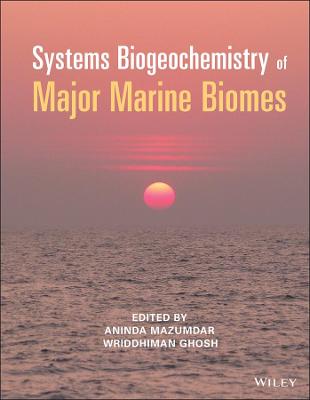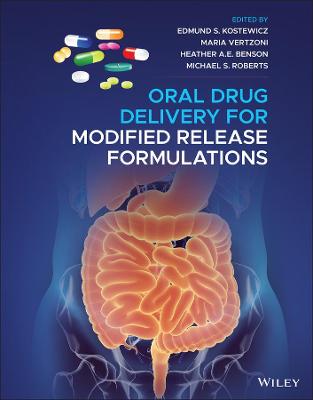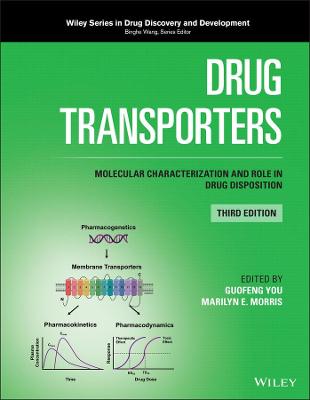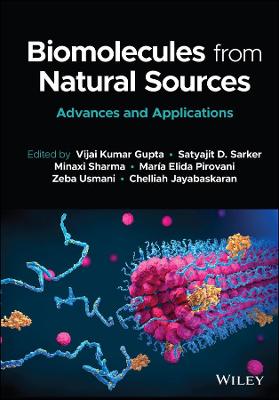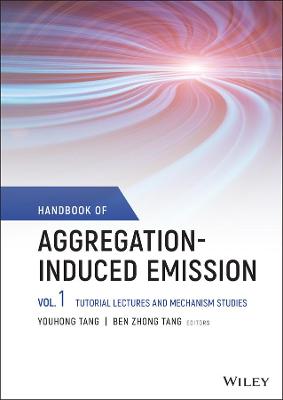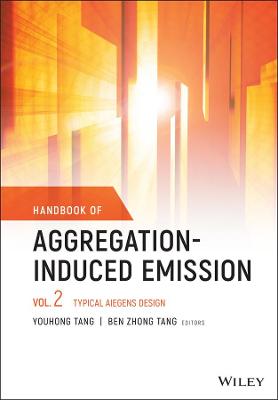Extraction Techniques for Environmental Analysis
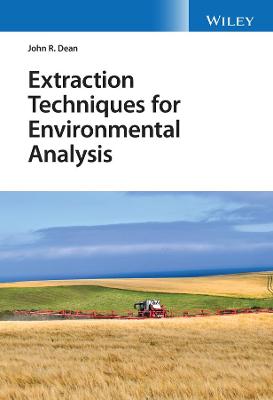 -15%
portes grátis
-15%
portes grátis
Extraction Techniques for Environmental Analysis
Dean, John R.
John Wiley & Sons Inc
03/2022
384
Dura
Inglês
9781119719045
15 a 20 dias
842
About the Author xvii
Acknowledgements xix
Section A Initial Considerations 1
1 The Analytical Approach 3
1.1 Introduction 3
1.2 Environmental Organic Compounds of Concern 4
1.3 Essentials of Practical Work 12
1.4 Health and Safety 15
1.5 Considerations for Data Presentation 21
1.5.1 Useful Tips on Presenting Data in Tables 21
1.5.2 Useful Tips on Presenting Data in Graphical Form 21
1.6 Use and Determination of Significant Figures 21
1.7 Units 23
1.8 Calibration and Quantitative Analysis 24
1.9 Terminology in Quantitative Analysis 24
1.10 Preparing Solutions for Quantitative Work 25
1.11 Calibration Graphs 27
1.12 The Internal Standard 28
1.13 Limits of Detection/Quantitation 29
1.14 Dilution or Concentration Factors 31
1.15 Quality Assurance 32
1.16 Use of Certified Reference Materials 33
1.17 Applications 34
Further Reading 39
Section B Sampling 41
2 Sampling and Storage 43
2.1 Introduction 43
2.2 Sampling Strategy 44
2.3 Types of Aqueous Matrices 45
2.4 Types of Soil Matrices 46
2.5 Physicochemical Properties of Water and Solid Environmental Matrices 49
2.5.1 Aqueous (Water) Samples 49
2.5.2 Solid (Soil) Samples 50
2.6 Sampling Soil (and/or Sediment) 52
2.7 Sampling Water 57
2.8 Sampling Air 59
2.9 Sampling and Analytical Operations Interrelationships and Terminology 60
2.9.1 Sampling Operations 60
2.9.2 Analytical Operations 61
2.10 Storage of Samples 63
2.10.1 Choice of Storage Container for Liquid Samples 63
2.10.2 Cleaning of Storage Container for Liquid Samples 64
2.11 Preservation Techniques for Liquid Samples 65
2.12 Preservation Techniques for Solid Samples 66
2.13 Preservation Techniques for Gaseous Samples 66
2.14 Applications 66
Reference 72
Section C Extraction of Aqueous Samples 73
3 Classical Approaches for Aqueous Extraction 75
3.1 Introduction 75
3.2 Liquid-Liquid Extraction 75
3.2.1 Theory of LLE 76
3.2.2 Selection of Solvents 77
3.2.3 Solvent Extraction 78
3.2.4 Problems with the LLE process and Their Remedies 81
3.3 Liquid Microextraction Techniques 81
3.3.1 Single-Drop Microextraction (SDME) 81
3.3.2 Dispersive Liquid-Liquid Microextraction (DLLME) 82
3.4 Purge and Trap 84
3.5 Headspace Extraction 84
3.5.1 Procedure for Static Headspace Sampling 86
3.5.2 Procedure for Dynamic Headspace Sampling 87
3.6 Application 88
4 Solid-Phase Extraction 91
4.1 Introduction 91
4.2 Types of SPE Sorbent 93
4.2.1 Multimodal and Mixed-Phase Extractions 94
4.2.2 Molecularly Imprinted Polymers (MIPs) 94
4.3 SPE Formats and Apparatus 97
4.4 Method of SPE Operation 100
4.5 Solvent Selection 103
4.6 Factors Affecting SPE 104
4.7 Selected Methods of Analysis for SPE 104
4.7.1 Application of Reversed-Phase SPE 104
4.7.2 Application of Normal-Phase SPE 106
4.7.3 Application of Ion Exchange SPE 107
4.7.4 Application of Mixed-Mode SPE 108
4.8 Automation and Online SPE 108
4.9 Applications 110
4.10 Summary 117
References 118
5 Solid-Phase MicroExtraction 119
5.1 Introduction 119
5.2 Theoretical Considerations for SPME 119
5.3 Practical Considerations for SPME 122
5.3.1 SPME Agitation Methods 123
5.3.2 Other SPME Operating Considerations 124
5.4 Application of SPME 124
5.5 Summary 130
Reference 130
6 In-Tube Extraction 131
6.1 Introduction 131
6.2 Microextraction in a Packed Syringe (MEPS) 133
6.2.1 Procedure for MEPS 133
6.2.2 Main Issues in MEPS 134
6.3 In-Tube Extraction (ITEX) 135
6.3.1 Procedure for ITEX-DHS 135
6.4 Application of ITEX-DHS 136
6.5 Summary 139
7 Stir-Bar Sorptive Extraction 141
7.1 Introduction 141
7.2 Theoretical Considerations for SBSE 141
7.3 Practical Issues for SBSE 143
7.3.1 Main Issues in SBSE 143
7.4 Application of SBSE 144
7.5 Summary 144
8 Membrane Extraction 145
8.1 Introduction 145
8.2 Theoretical Considerations for Membrane Extraction 146
8.2.1 Mass Transfer Coefficient Model 147
8.2.2 Chemical Reaction Kinetic Model 148
8.3 Passive Sampling Devices 149
8.4 Application of Passive Sampling Using Chemcatcher (R) 154
8.5 Summary 155
Reference 155
Section D Extraction of Solid Samples 157
9 Classical Approaches for Extraction of Solid Samples 159
9.1 Introduction 159
9.2 Theory of Liquid-Solid Extraction 159
9.3 Soxhlet Extraction 162
9.3.1 Experimental 163
9.4 Soxtec Extraction 164
9.5 Ultrasonic Extraction 165
9.5.1 Experimental 166
9.6 Shake Flask Extraction 167
9.6.1 Experimental 167
9.7 Application 168
Reference 170
10 Pressurized Liquid Extraction 171
10.1 Introduction 171
10.2 Theoretical Considerations Relating to the Extraction Process 171
10.2.1 Solubility and Mass Transfer Effects 172
10.2.2 Disruption of Surface Equilibrium (By Temperature and Pressure) 173
10.3 Instrumentation for PLE 173
10.4 A Typical Procedure for PLE 175
10.5 In Situ Clean-Up or Selective PLE 179
10.6 Method Development for PLE 181
10.6.1 Pre-Extraction Considerations 181
10.6.2 Packing the Extraction Vessel 181
10.7 Applications of PLE 182
10.8 Summary 204
References 204
11 Microwave-Assisted Extraction 205
11.1 Introduction 205
11.2 Theoretical Considerations for MAE 205
11.2.1 Selecting an Organic Solvent for MAE 207
11.2.2 Heating Methods 208
11.2.3 Calibration of a Microwave Instrument 209
11.3 Instrumentation for MAE 210
11.4 A Typical Procedure for MAE 211
11.5 Applications of MAE 212
11.6 Summary 217
References 217
12 Matrix Solid-Phase Dispersion 219
12.1 Introduction 219
12.2 Practical Considerations for MSPD 219
12.3 Optimization of MSPD 220
12.4 Application of MSPD 221
12.5 Summary 228
13 Supercritical Fluid Extraction 229
13.1 Introduction 229
13.2 Theoretical Considerations for SFE 230
13.3 Supercritical CO2 231
13.4 Instrumentation for SFE 231
13.5 A Typical Procedure for SFE 232
13.6 Application of SFE 236
13.7 Summary 238
References 238
Section E Extraction of Gaseous Samples 239
14 Air Sampling 241
14.1 Introduction 241
14.2 Techniques Used for Air Sampling 242
14.2.1 Whole Air Collection 242
14.2.2 Enrichment Onto Solid Sorbents 243
14.2.2.1 Active Methods 243
14.2.2.2 Passive Methods 243
14.3 Thermal Desorption 244
14.4 Workplace Exposure Limits 249
14.5 Biological Monitoring 249
14.6 Particulate Matter 250
14.7 Application of Air Sampling 251
14.8 Summary 252
References 252
Section F Post-Extraction 253
15 Pre-Concentration and Associated Sample Extract Procedures 255
15.1 Introduction 255
15.2 Solvent Evaporation Techniques 255
15.2.1 Needle Evaporation 256
15.2.2 Automated Evaporator (TurboVap) 256
15.2.3 Rotary Evaporation 256
15.2.4 Kuderna-Danish Evaporative Concentration 258
15.2.5 Automated Evaporative Concentration System 258
15.3 Post-Extract Evaporation 260
15.4 Sample Extract Clean-Up Procedures 260
15.4.1 Column Chromatography 260
15.4.1.1 Partition Chromatography 261
15.4.1.2 Gel Permeation Chromatography 261
15.4.1.3 Ion-Exchange Chromatography 261
15.4.2 Acid-Alkaline Partition 262
15.4.3 Acetonitrile-Hexane Partition 262
15.4.4 Sulphur Clean-Up 262
15.4.5 Alkaline Decomposition 262
15.5 Derivatization for Gas Chromatography 262
15.6 Application of Pre-Concentration for Analysis 264
References 264
16 Instrumental Techniques for Environmental Organic Analysis 265
16.1 Introduction 265
16.2 Theory of Chromatography 265
16.3 Chromatography Detectors: The Essentials 271
16.4 Gas Chromatography 272
16.4.1 Choice of Gas for GC 273
16.4.2 Sample Introduction in GC 274
16.4.3 The GC Oven 275
16.4.4 The GC Column 277
16.4.5 GC Detectors 279
16.4.6 Compound Derivatization for GC 283
16.5 High-Performance Liquid Chromatography 284
16.5.1 The Mobile Phase in HPLC 284
16.5.2 Sample Introduction in HPLC 285
16.5.3 The HPLC Column 286
16.5.4 Detectors for HPLC 288
16.6 Other Techniques for Environmental Organic Analysis 292
16.6.1 Infrared Spectroscopy 292
16.6.2 Nuclear Magnetic Resonance Spectrometry 293
16.6.3 Portable Techniques for Field Measurements 293
16.7 Applications of Chromatography in Environmental Analysis 294
16.8 Summary 300
Further Readings 300
Section G Post-Analysis: Decision- Making 301
17 Environmental Problem Solving 303
17.1 Introduction 303
References 327
Section H Historical Context 329
18 A History of Extraction Techniques and Chromatographic Analysis 331
18.1 Introduction 331
18.2 Application 339
References 345
Appendices 347
SI units and Physical Constants 357
Index 361
About the Author xvii
Acknowledgements xix
Section A Initial Considerations 1
1 The Analytical Approach 3
1.1 Introduction 3
1.2 Environmental Organic Compounds of Concern 4
1.3 Essentials of Practical Work 12
1.4 Health and Safety 15
1.5 Considerations for Data Presentation 21
1.5.1 Useful Tips on Presenting Data in Tables 21
1.5.2 Useful Tips on Presenting Data in Graphical Form 21
1.6 Use and Determination of Significant Figures 21
1.7 Units 23
1.8 Calibration and Quantitative Analysis 24
1.9 Terminology in Quantitative Analysis 24
1.10 Preparing Solutions for Quantitative Work 25
1.11 Calibration Graphs 27
1.12 The Internal Standard 28
1.13 Limits of Detection/Quantitation 29
1.14 Dilution or Concentration Factors 31
1.15 Quality Assurance 32
1.16 Use of Certified Reference Materials 33
1.17 Applications 34
Further Reading 39
Section B Sampling 41
2 Sampling and Storage 43
2.1 Introduction 43
2.2 Sampling Strategy 44
2.3 Types of Aqueous Matrices 45
2.4 Types of Soil Matrices 46
2.5 Physicochemical Properties of Water and Solid Environmental Matrices 49
2.5.1 Aqueous (Water) Samples 49
2.5.2 Solid (Soil) Samples 50
2.6 Sampling Soil (and/or Sediment) 52
2.7 Sampling Water 57
2.8 Sampling Air 59
2.9 Sampling and Analytical Operations Interrelationships and Terminology 60
2.9.1 Sampling Operations 60
2.9.2 Analytical Operations 61
2.10 Storage of Samples 63
2.10.1 Choice of Storage Container for Liquid Samples 63
2.10.2 Cleaning of Storage Container for Liquid Samples 64
2.11 Preservation Techniques for Liquid Samples 65
2.12 Preservation Techniques for Solid Samples 66
2.13 Preservation Techniques for Gaseous Samples 66
2.14 Applications 66
Reference 72
Section C Extraction of Aqueous Samples 73
3 Classical Approaches for Aqueous Extraction 75
3.1 Introduction 75
3.2 Liquid-Liquid Extraction 75
3.2.1 Theory of LLE 76
3.2.2 Selection of Solvents 77
3.2.3 Solvent Extraction 78
3.2.4 Problems with the LLE process and Their Remedies 81
3.3 Liquid Microextraction Techniques 81
3.3.1 Single-Drop Microextraction (SDME) 81
3.3.2 Dispersive Liquid-Liquid Microextraction (DLLME) 82
3.4 Purge and Trap 84
3.5 Headspace Extraction 84
3.5.1 Procedure for Static Headspace Sampling 86
3.5.2 Procedure for Dynamic Headspace Sampling 87
3.6 Application 88
4 Solid-Phase Extraction 91
4.1 Introduction 91
4.2 Types of SPE Sorbent 93
4.2.1 Multimodal and Mixed-Phase Extractions 94
4.2.2 Molecularly Imprinted Polymers (MIPs) 94
4.3 SPE Formats and Apparatus 97
4.4 Method of SPE Operation 100
4.5 Solvent Selection 103
4.6 Factors Affecting SPE 104
4.7 Selected Methods of Analysis for SPE 104
4.7.1 Application of Reversed-Phase SPE 104
4.7.2 Application of Normal-Phase SPE 106
4.7.3 Application of Ion Exchange SPE 107
4.7.4 Application of Mixed-Mode SPE 108
4.8 Automation and Online SPE 108
4.9 Applications 110
4.10 Summary 117
References 118
5 Solid-Phase MicroExtraction 119
5.1 Introduction 119
5.2 Theoretical Considerations for SPME 119
5.3 Practical Considerations for SPME 122
5.3.1 SPME Agitation Methods 123
5.3.2 Other SPME Operating Considerations 124
5.4 Application of SPME 124
5.5 Summary 130
Reference 130
6 In-Tube Extraction 131
6.1 Introduction 131
6.2 Microextraction in a Packed Syringe (MEPS) 133
6.2.1 Procedure for MEPS 133
6.2.2 Main Issues in MEPS 134
6.3 In-Tube Extraction (ITEX) 135
6.3.1 Procedure for ITEX-DHS 135
6.4 Application of ITEX-DHS 136
6.5 Summary 139
7 Stir-Bar Sorptive Extraction 141
7.1 Introduction 141
7.2 Theoretical Considerations for SBSE 141
7.3 Practical Issues for SBSE 143
7.3.1 Main Issues in SBSE 143
7.4 Application of SBSE 144
7.5 Summary 144
8 Membrane Extraction 145
8.1 Introduction 145
8.2 Theoretical Considerations for Membrane Extraction 146
8.2.1 Mass Transfer Coefficient Model 147
8.2.2 Chemical Reaction Kinetic Model 148
8.3 Passive Sampling Devices 149
8.4 Application of Passive Sampling Using Chemcatcher (R) 154
8.5 Summary 155
Reference 155
Section D Extraction of Solid Samples 157
9 Classical Approaches for Extraction of Solid Samples 159
9.1 Introduction 159
9.2 Theory of Liquid-Solid Extraction 159
9.3 Soxhlet Extraction 162
9.3.1 Experimental 163
9.4 Soxtec Extraction 164
9.5 Ultrasonic Extraction 165
9.5.1 Experimental 166
9.6 Shake Flask Extraction 167
9.6.1 Experimental 167
9.7 Application 168
Reference 170
10 Pressurized Liquid Extraction 171
10.1 Introduction 171
10.2 Theoretical Considerations Relating to the Extraction Process 171
10.2.1 Solubility and Mass Transfer Effects 172
10.2.2 Disruption of Surface Equilibrium (By Temperature and Pressure) 173
10.3 Instrumentation for PLE 173
10.4 A Typical Procedure for PLE 175
10.5 In Situ Clean-Up or Selective PLE 179
10.6 Method Development for PLE 181
10.6.1 Pre-Extraction Considerations 181
10.6.2 Packing the Extraction Vessel 181
10.7 Applications of PLE 182
10.8 Summary 204
References 204
11 Microwave-Assisted Extraction 205
11.1 Introduction 205
11.2 Theoretical Considerations for MAE 205
11.2.1 Selecting an Organic Solvent for MAE 207
11.2.2 Heating Methods 208
11.2.3 Calibration of a Microwave Instrument 209
11.3 Instrumentation for MAE 210
11.4 A Typical Procedure for MAE 211
11.5 Applications of MAE 212
11.6 Summary 217
References 217
12 Matrix Solid-Phase Dispersion 219
12.1 Introduction 219
12.2 Practical Considerations for MSPD 219
12.3 Optimization of MSPD 220
12.4 Application of MSPD 221
12.5 Summary 228
13 Supercritical Fluid Extraction 229
13.1 Introduction 229
13.2 Theoretical Considerations for SFE 230
13.3 Supercritical CO2 231
13.4 Instrumentation for SFE 231
13.5 A Typical Procedure for SFE 232
13.6 Application of SFE 236
13.7 Summary 238
References 238
Section E Extraction of Gaseous Samples 239
14 Air Sampling 241
14.1 Introduction 241
14.2 Techniques Used for Air Sampling 242
14.2.1 Whole Air Collection 242
14.2.2 Enrichment Onto Solid Sorbents 243
14.2.2.1 Active Methods 243
14.2.2.2 Passive Methods 243
14.3 Thermal Desorption 244
14.4 Workplace Exposure Limits 249
14.5 Biological Monitoring 249
14.6 Particulate Matter 250
14.7 Application of Air Sampling 251
14.8 Summary 252
References 252
Section F Post-Extraction 253
15 Pre-Concentration and Associated Sample Extract Procedures 255
15.1 Introduction 255
15.2 Solvent Evaporation Techniques 255
15.2.1 Needle Evaporation 256
15.2.2 Automated Evaporator (TurboVap) 256
15.2.3 Rotary Evaporation 256
15.2.4 Kuderna-Danish Evaporative Concentration 258
15.2.5 Automated Evaporative Concentration System 258
15.3 Post-Extract Evaporation 260
15.4 Sample Extract Clean-Up Procedures 260
15.4.1 Column Chromatography 260
15.4.1.1 Partition Chromatography 261
15.4.1.2 Gel Permeation Chromatography 261
15.4.1.3 Ion-Exchange Chromatography 261
15.4.2 Acid-Alkaline Partition 262
15.4.3 Acetonitrile-Hexane Partition 262
15.4.4 Sulphur Clean-Up 262
15.4.5 Alkaline Decomposition 262
15.5 Derivatization for Gas Chromatography 262
15.6 Application of Pre-Concentration for Analysis 264
References 264
16 Instrumental Techniques for Environmental Organic Analysis 265
16.1 Introduction 265
16.2 Theory of Chromatography 265
16.3 Chromatography Detectors: The Essentials 271
16.4 Gas Chromatography 272
16.4.1 Choice of Gas for GC 273
16.4.2 Sample Introduction in GC 274
16.4.3 The GC Oven 275
16.4.4 The GC Column 277
16.4.5 GC Detectors 279
16.4.6 Compound Derivatization for GC 283
16.5 High-Performance Liquid Chromatography 284
16.5.1 The Mobile Phase in HPLC 284
16.5.2 Sample Introduction in HPLC 285
16.5.3 The HPLC Column 286
16.5.4 Detectors for HPLC 288
16.6 Other Techniques for Environmental Organic Analysis 292
16.6.1 Infrared Spectroscopy 292
16.6.2 Nuclear Magnetic Resonance Spectrometry 293
16.6.3 Portable Techniques for Field Measurements 293
16.7 Applications of Chromatography in Environmental Analysis 294
16.8 Summary 300
Further Readings 300
Section G Post-Analysis: Decision- Making 301
17 Environmental Problem Solving 303
17.1 Introduction 303
References 327
Section H Historical Context 329
18 A History of Extraction Techniques and Chromatographic Analysis 331
18.1 Introduction 331
18.2 Application 339
References 345
Appendices 347
SI units and Physical Constants 357
Index 361

